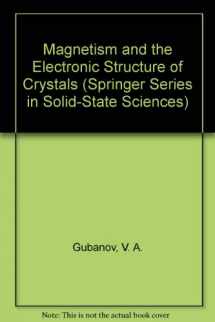
Magnetism and the Electronic Structure of Crystals (Springer Series in Solid-state Sciences)
Book details
Summary
Description
The quantum theory of magnetism is a well-developed part of contemporary solid-state physics. The basic concepts of this theory can be used to describe such important effects as ferromagnetic ordering oflocalized magnetic moments in crystals and ferromagnetism of metals produced by essentially delocalized electrons, as well as various types of mutual orientation of atomic magnetic moments in solids possessing different crystal lattices and compositions. In recent years,the spin-fluctuational approach has been developed, which can overcome some contradictions between "localized" and "itinerant" models in the quantum mechanics of magnetic crystals. These are only some of the principal achievements of quantum magnetic theory. Almost all of the known magnetic properties of solids can be qualitat ively explained on the basis of its concepts. Further developments should open up the possibility of reliable quantitative description of magnetic properties of solids. Unfortunately, such calculations based on model concepts appear to be very complicated and, quite often, not definite enough. The rather small number of parameters of qualitative models are usually not able to take into account the very different types of magnetic interactions that appear in crystals. Further development of magnetic theory requires quantitative information on electronic wave function in the crystal considered. This can be proved by electronic band structure and cluster calculations. In many cases the latter can be a starting point for quantitative calculations of parameters used in magnetic theory.


We would LOVE it if you could help us and other readers by reviewing the book
Book review



